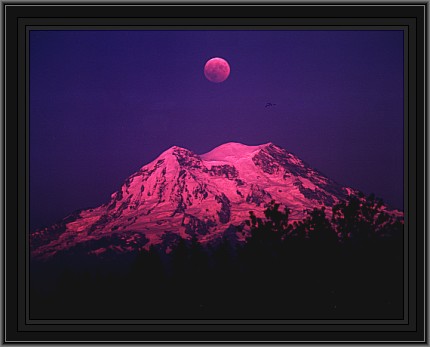
Mount Rainier
America's Most Dangerous Volcano
Gregory A. Alber
The Earth
Geology 1100
The Richard Stockton College of New Jersey

Mount Rainier which can be found close to the heavily populated area of Seattle and Tacoma in Washington, is a beautiful, captivating, and seemingly tranquil mountain. The catch is, it is not an ordinary mountain, it is an active volcano that has the potential of destroying the lifestyles and lives of many people. Millions of people live and work in the shadow of this captivating volcano, while others spend hours on end hiking and climbing its steep, challenging slopes. However, few are aware, that Mount Rainier poses a deadly threat to all of those that live, work, and play in its shadow.
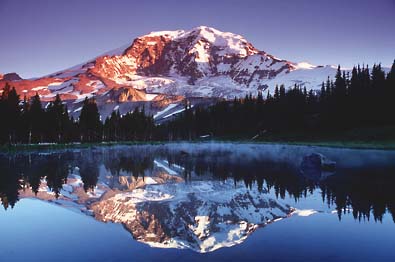
Mount Rainier located in the state of Washington, is one of about two dozen volcanoes of the Pacific Northwest known as the Cascade Range. This range of volcanoes runs for about 1,000 miles from northern California to southern British Columbia. The volcanoes of the Cascade Range (map) are known as stratovolcanoes, which are known to have fewer but much more violent eruptions than shield volcanoes, like the ones found in Hawaii.
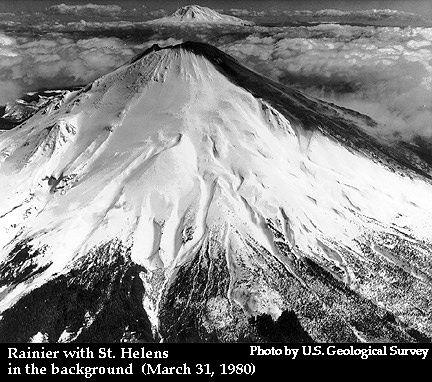
Mount Rainier at 14,410 feet above sea level is the highest mountain in the Cascade Range. It has a relief of almost 10,000 feet from the valley floor to the summit. Covering 100 square miles the mountain is surrounded by the largest single-mountain glacier system in the United States outside Alaska, with 26 glaciers radiating from the summit. Water that has melted from Rainier's glaciers feed into five major rivers and their tributaries, which lead into the Puget Sound and the Columbia River.
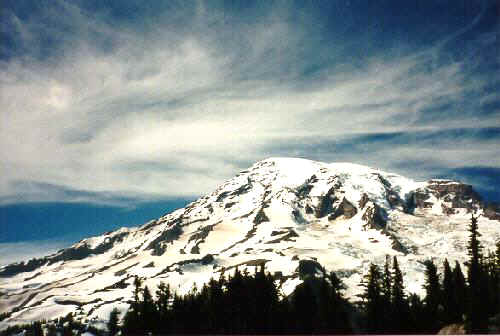
Mount Rainier was named in 1792 by the English explorer George Vancouver after a fellow navigator, Admiral Peter Rainier. The Native American name for the mountain, Tahoma, means "The mountain that was God." The first successful ascent of Mount Rainier, was completed by Hazard Stevens and P.B. VanTrump on August 17, 1870. Today, Mount Rainier lies within the Mount Rainier National Park which was created in 1899. The park, which hosts over two million people annually, surrounds the volcano and covers 378 miles of wilderness.
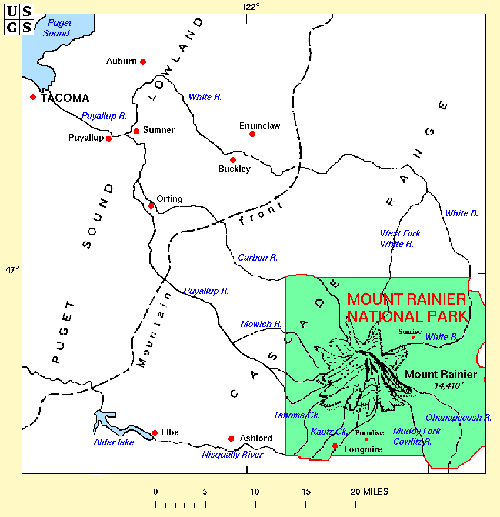
Mount Rainier is located 87 miles from Seattle, 65 miles from Tacoma, and towers over many other towns which are closer. This area, which is often referred to as the Seattle-Tacoma metropolitan, is home to over 2.5 million people. This area is also very important economically to the Pacific Northwest, because it is one of the high-technology industry centers of the region.
Tacoma, Washington with Mount Rainier in background
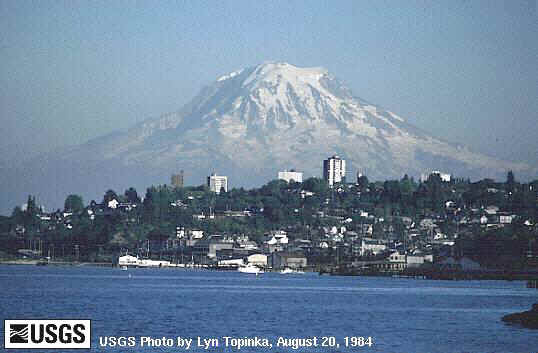
Like the title of this page states, Mount Rainier is one of the most potentially deadly volcanoes in the United States of America. In 1989, it was declared a decade volcano to be studied during the International Decade for Natural Disaster Reduction. Mount Rainier was chosen as a decade volcano because of the many hazards and dangers it poses to the highly populated areas surrounding it. Its many hazards are related to the large quantity of ice and snow covering its slopes, and its extensive but unstudied eruptive history.
With the recent eruption of many volcanoes around the world, the scientific community is beginning to understand all of the hazards associated with volcanoes, including the hazards that can occur in the absence of an actual volcanic eruption. Learning to understand the different types and potential of these hazards is critical to the development of zoning and mitigation policies. Until recently, not much was known about the history of Mount Rainier, however recent research has unfolded a great story of past events associated with this volcano. This new found information has allowed for a greater understanding of the potential for future disasters in this area.
Like I stated in the paragraph above there are many hazards associated with volcanoes. In my opinion the best way to try to understand all of theses hazards is to divide them into two groups. These two groups being: hazards associated with an eruption and hazards that could occur independent of an eruption. However, to try and list and explain all of these types of hazards would be a little much, so I have created two separate pages that discuss, what I feel to be the major types of hazards that can be associated with Mount Rainier. I have also included two links to two excellent web pages that discuss all the different types of hazards associated with Mount Rainier. http://vulcan.wr.usgs.gov/Volcanoes/Rainier/Hazards/OFR98-428/framework.html
http://vulcan.wr.usgs.gov/Volcanoes/Rainier/Publications/FS065-97/framework.html
So, now you know about some of Mount Rainier's devastating potential. There is no way that we can do anything to prevent "The Mountain" from doing what it is going to do. All we can do is hopefully have and idea when one or all of these hazards will take place and then try and get out of the way. In my opinion that isn't the best plan possible, but for the people who live, work, and play in Mount Rainier's shadow that is the only plan. The people who live in the area know that, it's not if Mount Rainier will come crashing down on their lives but when. So, the only question now is how many people will die.
